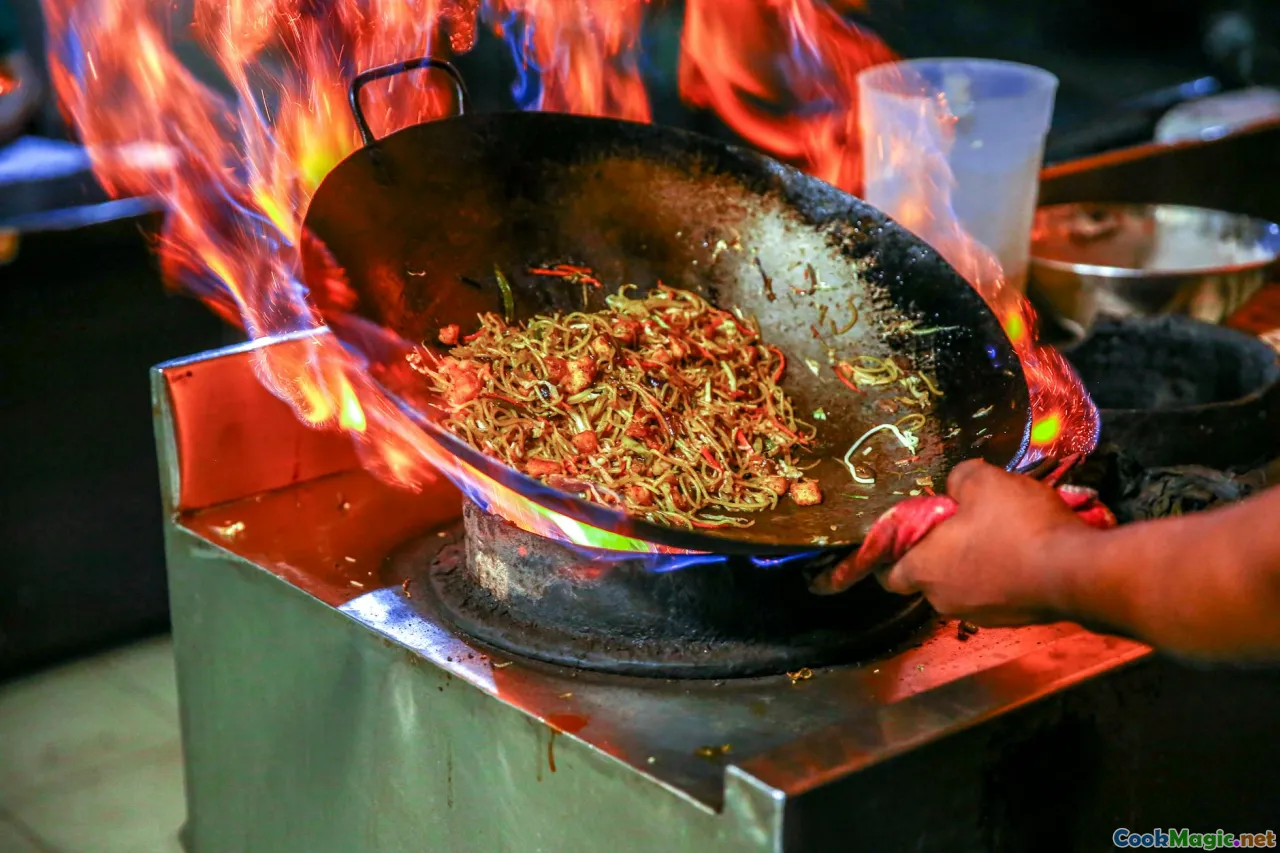Essential Wok Skills for Authentic Chinese Cooking
8 min read Discover the vital skills needed to master the wok and create authentic Chinese dishes with vibrant flavors, perfect textures, and cultural depth. April 29, 2025 18:00
Essential Wok Skills for Authentic Chinese Cooking
Imagine standing in a bustling street market in Shanghai or Beijing, the air thick with the aroma of sizzling garlic, fragrant soy, and smoky spices. The rhythmic clang of metal on metal, the fiery glow of the wok, and the vibrant colors of fresh vegetables and tender meats dance before your eyes. This is the heart of authentic Chinese cooking—a dynamic, sensory experience rooted in mastery of the wok.
But beyond the captivating sights and smells lies a set of essential skills that transform simple ingredients into culinary magic. Mastering the wok is not merely about technique; it's about understanding a cultural art form that has been refined over centuries. Whether you're a home cook or aspiring chef, developing these core skills will elevate your Chinese dishes from good to extraordinary.
The Cultural Significance of the Wok
The wok is more than a cooking vessel; it is a symbol of Chinese culinary identity. Its origins trace back over 2,000 years, with variations across regions, each adapted to local ingredients and flavors. The design—deep, round-bottomed, and made of cast iron, carbon steel, or clay—allows for rapid, high-heat cooking that preserves the integrity of ingredients.
In traditional Chinese households, the wok is a central fixture, used daily for stir-frying, steaming, braising, and even deep-frying. The skillful handling of a wok connects cooks to a rich culinary heritage, emphasizing harmony between flavors, textures, and presentation.
Setting Up Your Wok for Success
Before diving into techniques, it’s vital to establish the right environment.
Choosing the Right Wok
- Material: Carbon steel woks are preferred for their quick heat conduction and durability. Cast iron woks retain heat well but are heavier.
- Size: A 12-14 inch wok offers ample space for tossing ingredients without overcrowding.
- Shape: Round-bottom woks require a wok ring for stable cooking, while flat-bottomed woks are more suitable for electric stoves.
Proper Seasoning
A well-seasoned wok develops a natural non-stick surface and imparts a subtle smoky flavor. Seasoning involves heating oil in the wok until it polymerizes, creating a protective layer that enhances both performance and flavor.
Core Wok Skills
1. Mastering Heat Control
High heat is the cornerstone of wok cooking. It allows ingredients to sear quickly, locking in juices and flavors while developing that coveted smoky aroma—"wok hei".
Tips:
- Preheat the wok until it is hot enough to shimmer.
- Use a small amount of oil and swirl to coat the surface evenly.
- Test the heat with a small piece of vegetable—if it sizzles immediately, you're ready.
2. Proper Ingredient Preparation
In Chinese cooking, mise en placeis crucial. Cut vegetables uniformly for quick, even cooking. Marinade proteins briefly to infuse flavor.Pro tip: Always dry ingredients thoroughly; excess moisture causes splattering and uneven cooking.
3. The Art of Tossing and Stir-Frying
The signature of wok cooking is the swift tossing of ingredients. This technique ensures even heat distribution and prevents sticking.
How to master it:
- Keep your ingredients close to the wok surface.
- Use a quick wrist motion to flip and turn ingredients.
- Practice in front of a mirror or with a friend until it feels natural.
4. Timing and Sequence
Add ingredients in stages based on cooking time:
- Aromatics (garlic, ginger) go in first.
- Denser vegetables (carrots, broccoli) follow.
- Proteins are added last to prevent overcooking.
5. Building Flavors with Sauces
Create a balanced sauce with soy, rice wine, oyster sauce, and sesame oil. Add sauces at the right moment to enhance, not drown, the ingredients.
Tip: Mix sauces beforehand and add in small increments, tasting as you go.
6. Maintaining the Wok’s Non-stick Surface
Avoid using metal utensils that can scratch the seasoning. Use wooden, bamboo, or silicone tools.
7. Cleaning and Care
After cooking, wipe the wok with a paper towel. Avoid soap, which can strip the seasoning. Occasionally, heat the wok and rub with a little oil to maintain its non-stick surface.
Practical Chinese Dishes to Practice Your Wok Skills
- Kung Pao Chicken: The perfect test of heat control and tossing.
- Hot Pot Vegetables: Demonstrates ingredient prep and quick cooking.
- Stir-Fried Greens: Shows technique in handling delicate vegetables.
- Fried Rice: Combines multiple skills—high heat, timing, and flavor layering.
Personal Reflection and Tips
From my early days experimenting in a cramped kitchen in Chengdu, I learned that patience and respect for the wok’s capabilities are essential. I remember the first time I achieved that elusive wok hei—an aromatic, smoky essence that elevates any stir-fry into a culinary masterpiece.
Investing in your wok and practicing these skills transforms cooking from a chore into a joyful dance. Each toss, sizzle, and aromatic burst becomes a testament to your growing mastery of Chinese culinary artistry.
Final Thoughts
Mastering wok skills is a journey into the soul of Chinese cuisine. It’s about understanding heat, ingredients, and the rhythm of cooking—a dance that celebrates tradition, flavor, and creativity. With patience and practice, the humble wok becomes a powerful tool to create dishes that are rich in history, culture, and vibrant taste.
Embrace the process, enjoy the sensory symphony, and soon you’ll find yourself cooking authentic Chinese dishes that delight family and friends alike—an homage to centuries of culinary excellence.









